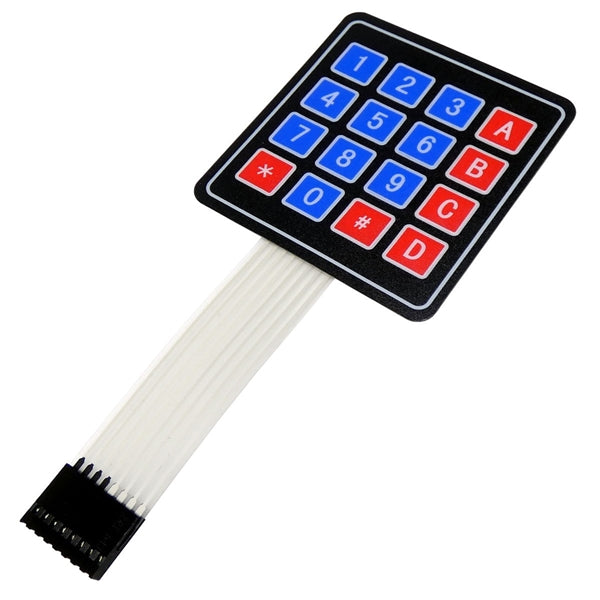How Membrane Switches Are Shaping the Future of Electronic Interfaces
How Membrane Switches Are Shaping the Future of Electronic Interfaces
Blog Article
Recognizing Membrane Layer Changes: The Secret to Sturdy and Trusted Controls

What Are Membrane Layer Buttons?
Membrane buttons are an innovative solution in the world of interface modern technology, integrating functionality and design flawlessly. These gadgets serve as a user interface between individuals and electronic systems, integrating numerous components right into a portable style. Commonly built from flexible, thin layers of products, membrane layer buttons are made to respond to touch, allowing individuals to engage with equipment and electronic devices successfully.
The main components of a membrane layer button include a printed circuit layer, visuals overlay, and a spacer layer that prevents unintentional activation. The graphic overlay can be tailored to reflect brand name identity or individual choices, enhancing appearances while guaranteeing functionality. Membrane buttons are generally used in various applications, including clinical gadgets, consumer electronic devices, and industrial tools, owing to their toughness and resistance to environmental factors such as wetness and dirt.
One of the crucial benefits of membrane layer buttons is their capability to withstand wear and tear, making them excellent for high-traffic environments. Furthermore, they are light-weight and need minimal room, permitting innovative layouts in item advancement. In general, membrane changes represent a reliable and useful selection for modern electronic interfaces, weding innovation with user-centric style concepts.
Just How Membrane Switches Work
The operation of membrane switches hinges on an easy yet effective mechanism that converts customer input right into digital signals. When a customer presses the switch, the top layer deforms, permitting a conductive aspect in the circuit layer to make call with a corresponding conductive pad on the bottom of the visuals overlay.
The design of membrane buttons can differ, yet they usually include domes or tactile elements to offer feedback to the customer, enhancing the total experience - membrane switch. The products made use of in membrane buttons, such as polyester or polycarbonate, add to their resilience and resistance to environmental factors, including wetness and dirt. The published circuits are normally enveloped, which safeguards them from wear and tear over time.
Advantages of Membrane Layer Buttons

Furthermore, membrane layer buttons are recognized for their durability. Created from durable products, they are resistant to dirt, dampness, and physical wear, which substantially expands their life expectancy compared to traditional click for more info mechanical switches. This durability makes them particularly appropriate for high-traffic settings and applications needing longevity.
One more considerable advantage is the convenience of cleaning and upkeep. The smooth surface of membrane switches over reduces dust buildup and is usually unsusceptible spills, making them suitable for setups that require frequent sanitization.
Furthermore, membrane buttons look at here now supply a structured profile, leading to a thinner style that can be integrated right into various devices without including bulk. This feature not just boosts the visual allure however likewise contributes to an extra ergonomic item style.
Applications of Membrane Buttons
Straightforward and versatile, membrane buttons find applications across a wide variety of industries, including clinical devices, customer electronic devices, and industrial tools. In the clinical area, these buttons are indispensable to gadgets such as diagnostic devices, person surveillance systems, and mixture pumps, where reliability and convenience of cleaning are important. Their capability to endure severe environments and preserve performance makes them ideal for such applications.

In customer electronic devices, membrane layer switches are used in products like microwaves, cleaning equipments, and push-button controls - membrane switch. Their sleek layout enables instinctive interface, improving the overall individual experience while supplying resilience and resistance to tear and wear
Industrial equipment additionally profits from membrane layer buttons, particularly in control panels for equipment and automation systems. These buttons use security versus dirt and moisture, making certain constant efficiency in challenging environments. Their customizable functions enable manufacturers to tailor them to particular operational needs, enhancing effectiveness and performance.
Selecting the Right Membrane Switch
When selecting a membrane layer switch, it is important to consider numerous elements that influence performance and suitability for details applications. The key considerations include environmental problems, tactile feedback, durability, and style specs.
First, examine the operating atmosphere; switches exposed to wetness, chemicals, or severe temperatures need details materials to make sure durability and capability. Next, evaluate the demand for responsive responses. Depending on individual communication, some applications might take advantage of a tactile response to validate activation, while blog others may like a non-tactile design for aesthetic reasons.
Sturdiness is another essential element; membrane buttons should be developed to stand up to constant use, effects, and abrasion. Guarantee the chosen button can endure the anticipated lifecycle, especially in high-usage circumstances.

Verdict
In final thought, membrane layer switches over serve as essential parts in the design of sturdy and dependable control systems across various markets. The adaptability of membrane layer switches permits for tailored solutions that satisfy details functional demands, reinforcing their value in contemporary technology.
Membrane changes stand for a crucial aspect of contemporary user interface layout, mixing performance with strength in different applications.Membrane switches are an innovative remedy in the world of user interface technology, integrating performance and design flawlessly. Normally created from versatile, slim layers of materials, membrane buttons are made to respond to touch, enabling users to communicate with equipment and digital gadgets efficiently.
The design of membrane switches can vary, however they commonly integrate domes or responsive aspects to offer responses to the user, improving the overall experience.In verdict, membrane layer changes offer as vital components in the design of long lasting and reputable control systems throughout various markets.
Report this page